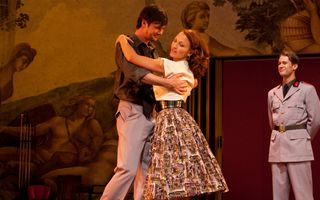- Much Ado About Nothing is by far the most prose-heavy play that Shakespeare wrote. Only a quarter of the lines are in verse.
- Elizabethans sometimes referred to the female anatomy as “nothing” or “no-thing” (as opposed to the male anatomy), giving the title of the play another level of suggestive meaning.
- This is the final play that Shakespeare wrote which features a bumbling, clownish fool character (Dogberry). After Much Ado About Nothing, Shakespeare’s fool characters become wise, witty, and much more intelligent.
- Shakespeare is believed to have created the romantic trope of a couple who initially despise each other then later fall in love, through the characters of Benedick and Beatrice. Other couples from literature whose relationship followed in this fashion include Elizabeth Bennet and Mr Darcy, Han Solo and Princess Leia, and even Belle and the Beast.
- Probably the most famous film version of the play is Kenneth Branagh’s 1993 version, filmed in Florence, Tuscany. Emma Thompson played Beatrice against Branagh’s Benedick, and the two were husband and wife at the time of filming.
- The play has inspired many musicians, including Mumford and Sons’ album Sigh No More (a direct line from the play), and Green Day’s Billie Joe Armstrong’s musical adaptation These Paper Bullets.





